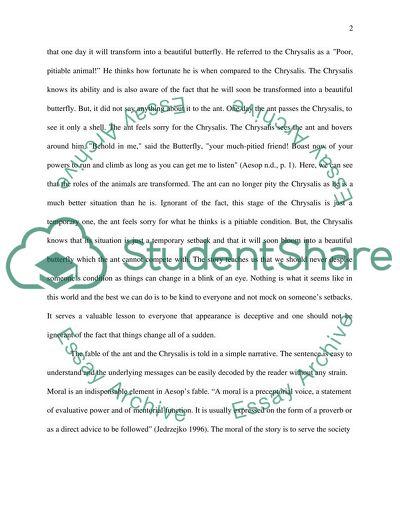Cite this document
(“Textual analysis: Aseop's Fables, Narrative and Storytelling Essay”, n.d.)
Textual analysis: Aseop's Fables, Narrative and Storytelling Essay. Retrieved from https://studentshare.org/journalism-communication/1443448-textual-analysis-aseop-s-fables-narrative-and
Textual analysis: Aseop's Fables, Narrative and Storytelling Essay. Retrieved from https://studentshare.org/journalism-communication/1443448-textual-analysis-aseop-s-fables-narrative-and
(Textual Analysis: Aseop'S Fables, Narrative and Storytelling Essay)
Textual Analysis: Aseop'S Fables, Narrative and Storytelling Essay. https://studentshare.org/journalism-communication/1443448-textual-analysis-aseop-s-fables-narrative-and.
Textual Analysis: Aseop'S Fables, Narrative and Storytelling Essay. https://studentshare.org/journalism-communication/1443448-textual-analysis-aseop-s-fables-narrative-and.
“Textual Analysis: Aseop'S Fables, Narrative and Storytelling Essay”, n.d. https://studentshare.org/journalism-communication/1443448-textual-analysis-aseop-s-fables-narrative-and.


